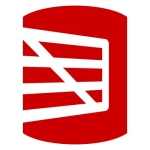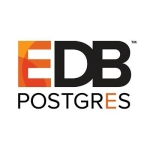Valuable Features
We are a standard edition shop for Oracle. We don't have access to a lot of the enterprise edition performance analysis feature. We don't get AWR reports. We don't get a lot of visibility into the database performance. DPA, for us, breaches that gap and it gives us a real nice, very concise graphical interface and visibility into the database performance itself. That's the thing that, the million-dollar bonus for us right there
Improvements to My Organization
It has been a cultural change for us. The interface is really easy to use, so we can create an internal web link that sends users, developers, management to the DPA tool. Even though those people aren't DPAs, they can get in and they can drill into data and it's very easy to present that very visual data to teams, to departments, to management, to get them to understand where we're having a performance problem, what the consequence to that problem is, what the impact of it is. That does a lot to move a conversation forward to assigning resources to getting performance issues that are outside of the database addressed in a pretty timely manner.
Room for Improvement
It's a graphical tool, so it lets you see wait time for a database instance. That's really nice when you're dealing with similar instances. One of things that I'd like to see is when you're dealing with a clustered instance or a rack instance, being able to visualize all the nodes for that one rack instance on a single page, so you can see if a particular node is maybe taking more load, if there's a problem with one of the nodes in your cluster, something like that.
Well, what I just mentioned with the kind of more integrated view for clustered systems. They are pretty on top of their community. They've got a website where you can go in and you can make feature requests. I don't have any real concerns with performance. Installation is good. Support is good. I'd say that my thoughts for improvement are pretty trivial. Maybe the type of thing that I wouldn't even categorize that as annoyances. When you get into the administration screen, there are three broad categories that you can select from. When you go into one of those categories, you can do something. When you come back to the previous screen, it takes you to that first screen where you have the three categories.
Stability Issues
We have not had any issues with it. We've been running it for, I think, about two and a half years now and the only downtime we've experienced is just for standard patching. A new version comes out and so you shut down the web server. You roll the patch in or roll the new version in and bring it back up. We're down for like 20 minutes maybe.
Scalability Issues
We haven't really had any issues with it. Again, we're a pretty small shop. We have nine database instances. Scalability is more of just a licensing factor. As you want to monitor more instances, you go out and you just purchase more licensing.
Customer Service and Technical Support
I have not had to open up many tickets. In two and a half years, I think, probably four, five tickets that we've opened with them. Probably three of those I'm going to say were more of a how do we get more out of this feature versus actual technical problems, but in every case, the sport has been really prompt. I think the first experience that I had with them, the guy responded back by email or the tech support responded back by email within 5, 10 minutes. They're really responsive, really on top of things. It seems like they have a strong sense of customer service and wanting to make sure that their customers are satisfied and understand to solve your problem, if there's anything else, if you have any other questions, that sort of things. It's been really positive for us.
Initial Setup
It was really straightforward. We initially downloaded it as a trial and put in on some old hardware. Just thinking "We'll see how this goes." We used it for, I think, it was a 30-day trial and within about, I don't know, 10 days, we made a decision and said, "Yeah, we're going to buy this." Bought the licenses and just applied them to that instance that we've expanded up on. We recently moved it into a full-fledged production environment. It was working and it wasn't, there are too many other fires so we didn't end up moving it right away like we should've. Then re-installing it on that other box, migrating it to a new hardware, new operating system, new database backend, was really straightforward. I think it might have taken us 30 minutes. Their documentation was pretty straightforward. There's not a whole lot to it.
Other Solutions Considered
We were looking for something that was going to be usable not just to our database administrators, but to the enterprise as a whole. We didn't want something that was really complex to use, that was going to be awkward for people. The DPA tool has a really clean interface. It's really straightforward to use. You can drill into data and get a lot of depth from it and that's something that we didn't find in the competitors tools. Not that you can't drill in with competitive tools and get that same information, but the ease of getting to that deep level of information was much tougher. Most of the other products weren't as navigable. DPA, for us, was such a straightforward easy tool. There are a couple of help screens that pop up when you first start using it and you get in there and execute them once you understand how it works. Like I said, you can give it to a developer, you can give to someone that's not highly technical and they can figure out how to use it in just a couple of minutes and get right in there.
Other Advice
I am really happy with it. There's continuous improvement and updates that are taking place. They do a lot of betas. They seem to listen to their user community. It does what it says it's going to do. It does it really easily. To me, that's the definition of a really good tool or a great tool, is you don't have to spend a lot of time figuring out how to use it and it just works.
It's a pretty lightweight product. You could, I'm sure, get away ... It's based on a web server so you could probably install it on a system that was supporting other similar applications and get away with that if you were concerned about building out a dedicated platform for the product. I would say, probably the best advice would be to get involved in their support community and be involved in that. There're so much great information from users, customizations, that you users provide that you can implement in your own environment to get even more out of the product. Then, in turn, that you could contribute to the environment as well.
Disclosure: I am a real user, and this review is based on my own experience and opinions.










Which elements in the initial setup process were you impressed by?